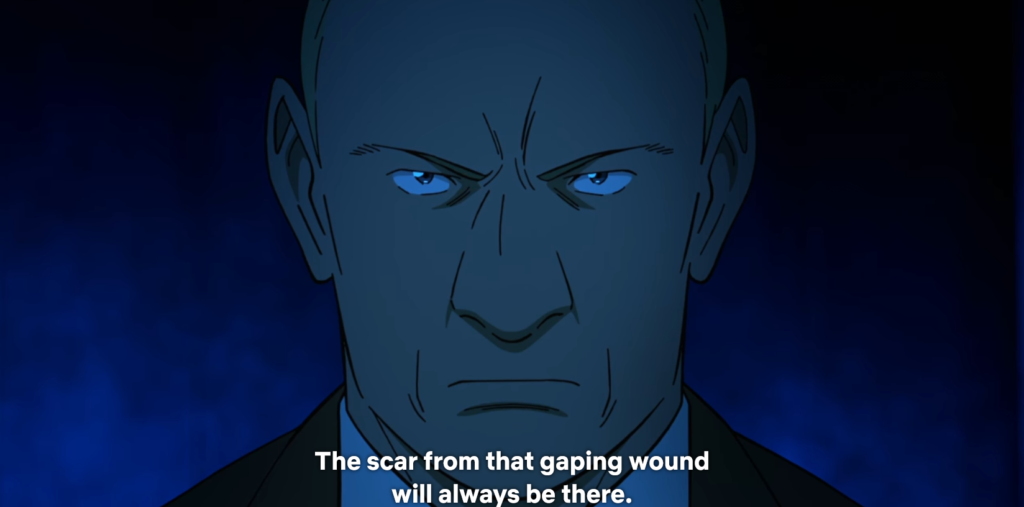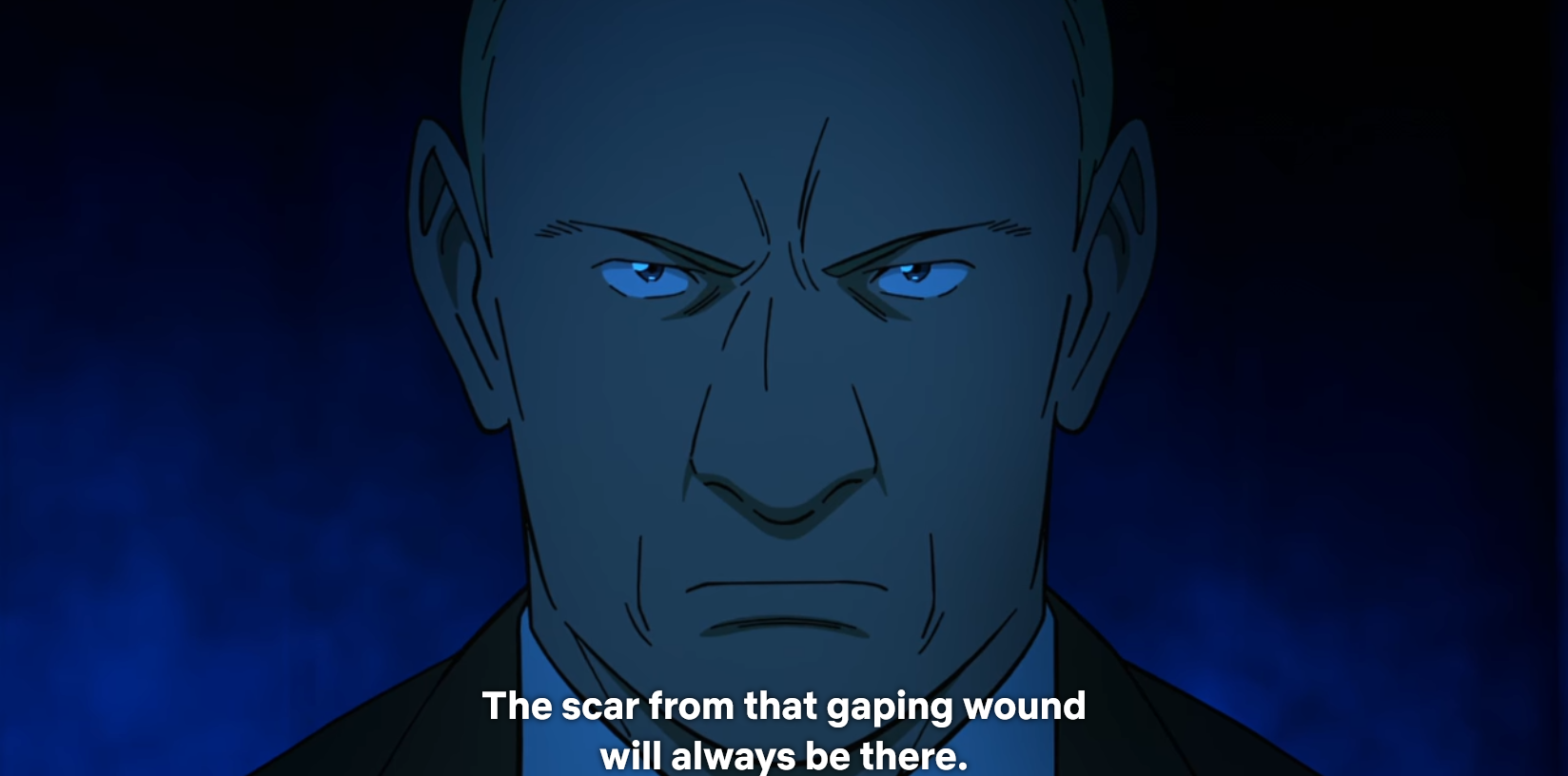Anime Review: Pluto
On an alternate Earth where robotics technology is far more advanced than our own, self-aware robots have spread into almost every facet of society. Some are virtually indistinguishable from humans, and in recent years, robots have been granted at least some civil rights. But some robots are more powerful than others, with seven of them being capable of “mass destruction.” Now, someone or something is stalking the world’s most powerful robots, killing them one by one. Also, several humans closely associated with rights for robots or developing new models are being killed by…maybe…the same being. But only a superpowerful robot could destroy another super robot, and robots are hardwired to never kill humans. (With one exception who will be important later, but we know where it is.) Europol’s top robot detective, Gesicht, is assigned to the case.

This animated series is an adaptation of the manga of the same name by Naoki Urasawa, which was itself an adaptation of “The Strongest Robot in the World”, a famous plotline from Osamu Tezuka’s classic Tetsuwan Atom (“Astro Boy”). It shifts the focus, initially, from Atom as the boy hero of a superhero story, to Gesicht as the protagonist of a mystery/thriller series.
For those unfamiliar with Atom/Astro, brilliant scientist Dr. Tenma lost his son Tobio to a motor vehicle accident. Consumed with grief, he built a replica of his child, but powerful enough to never die again. Over time, Dr. Tenma came to realize that his substitute son would never age, and was more an idealized version of Tobio than a resurrection. Growing cold of heart, he sold Atom to a circus, setting the young robot off on a series of adventures. (The two never completely reconciled.)
As Gesicht investigates, he begins to realize that all the people and robots targeted were also involved with the 39th Central Asian War. This conflict began when Persia and its dictatorial leader King Darius XIV were accused of creating and hoarding “robots of mass destruction” by the president of the United States of Thracia. The Bora Commission of scientists and diplomats was assigned to investigate, but found no such robots, just a disturbing graveyard. Despite this, Thracia pressured the other nations to invade anyway to liberate the country. (Does this remind you of anything?)
The series has several smaller mysteries in addition to the main one. Why is Gesicht seeing flashes of a man offering to sell a body? What is the great sadness that Atom’s sister Uran senses from afar? What is the difference between robots and humans, really, and what happens when a robot becomes too human? Is there such a thing as a “perfect” robot?
The series is eight episodes, each about an hour long, to match the volumes of the manga. If you haven’t read the manga, the first episode suddenly turning into the story of a blind composer and his new robot butler for an extended period might be a bit jarring, but rest assured that it is both thematically important and going to tie back in to the main plot.
The art captures Urasawa’s character designs well, though a number of those are less cartoony versions of Tezuka’s designs. The voice acting is also excellent, and I understand the English dub cast is outstanding.
Content note: Violence, sometimes lethal, Death of children. Fantastic racism–there’s an anti-robot hate group, though even they are disgusted when one of their members goes too far. Partial nudity. Cockroaches. Teens on up should be able to handle it.
This is a sad story as we see most of the victims trying to live their lives before they are murdered, and even the murderer turns out to be a victim in his own way. But the emphasis that hatred creates nothing is the ultimate takeaway here, and Atom is in the end the hero that he was in the original series.
Highly recommended for science fiction and “absurdly human robots” fans.

